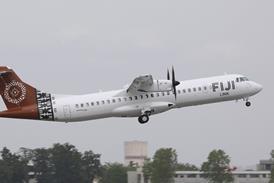Investigators have determined that a failure to detect a discrepancy in loading documentation led a Qantas Airbus A330-300 to depart above maximum weight limits.
The twinjet was 884kg above its maximum take-off weight and 384kg above maximum taxi weight when it left Sydney for Hong Kong.
This oversight led the crew to enter inaccurate centre-of-gravity and zero-fuel weight data into the A330's computer systems, and delays in notification of the loading error meant the jet operated 10 more sectors before undergoing precautionary maintenance checks.
Australian Transport Safety Bureau investigators have catalogued the chain of events on 6 March 2009, stating that the aircraft had originally been predicted to be overweight.
While the A330 was being prepared at Sydney, proprietary flight management software predicted that, given the operational demands, the aircraft would be overweight.
The load controller examined options for removing some of the freight pallets and, in the course of this discussion, checked that they could be locked down in their assigned position.
But owing to the nature of the software this action generated a premature load instruction report that was automatically sent to the ramp.
When the load controller finalised the loading configuration of the aircraft - electing to remove a heavy pallet and replace it with a lighter one, to bring the weight within limits - the previously-issued loading instructions were not amended.
"That resulted in the ramp staff being unaware of the changed loading requirement and the loading proceeded as initially planned," says the ATSB.
"The discrepancy between the actual aircraft load and operator's load management system was not detected during the completion of the load controller's 'final distribution check' prior to issuing the final load sheet to the flight crew."
As a result of the carriage of a heavier pallet than indicated during the loading check, the A330 (VH-QPJ) departed with 1.62t more freight than indicated. The net effect was that the jet exceeded its maximum taxi and take-off weights.
Although ground staff in Hong Kong noticed a discrepancy in the freight consignment, the required documentation was not completed and the carrier's safety department did not become aware of the event until six days later.
Records showed that the maximum taxi weight was exceeded by 0.2%. No damage was detected during the eventual overweight taxi check.
But the ATSB says that, although this figure was minor, "a discrepancy between the [calculated] and actual aircraft loading had the potential to affect the safety of flight".
In its report into the event the ATSB states that while "no safety issues were identified", the operator implemented several changes to the process for managing load control.
Source: Air Transport Intelligence news























